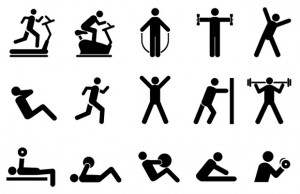As college students, one thing that seems like a simple task is note taking. The better notes you take; the better grades you get. One thing that struck my curiosity was how different note taking techniques impact a student’s abilities to perform well on exams. As time goes on, I have started to notice more and more students using laptops in order to take notes in a classroom setting. My biggest question is whether or not taking notes on a laptop is as effective as writing notes down in a notebook.
Researchers at Princeton University set out to answer to that exact question. In the this study, researchers compiled a group of 66 students who were not told the true purpose of the study. During the study, all of the participants were put into a room with either a laptop or a notebook and shown Ted Talks after being instructed to take notes. After the Ted Talks ended, the subjects were taken into a lab and instructed to complete two distracting activates. After a long enough time had passed since the Ted Talk, the subjects were prompted with a mix of factual and conceptual questions. After the students had taken the tests, their scores were determined by “blind” graders in order to make sure there was no bias towards one group.
The results of that study turned out to be quite interesting. While the average scores on the factual section of the assessments were about the same, the average conceptual scores turned out to be much higher for the subjects who took notes on notebooks. One of the possible mechanisms discussed in the study was that students taking notes on laptops were writing down exactly what was being said in the Ted Talks whereas students who were taking notes on paper were noting key points and concepts. This mechanism would explain why students taking notes on laptops were scoring equally as well on the factual portion but not as well on the conceptual portion of the assessment.
My take away from this study is that students are much better off taking notes with pen and paper rather than with a laptop. The advantage of handwriting notes is that it encourages students to conceptualize what is being said in a more creative fashion, whereas laptop note taking encourages replication on a presenter’s information. Also I have noticed that, not only is using a laptop often distracting to others, it can lead to students getting distracted by the temptation to use social media or browse the internet.

















